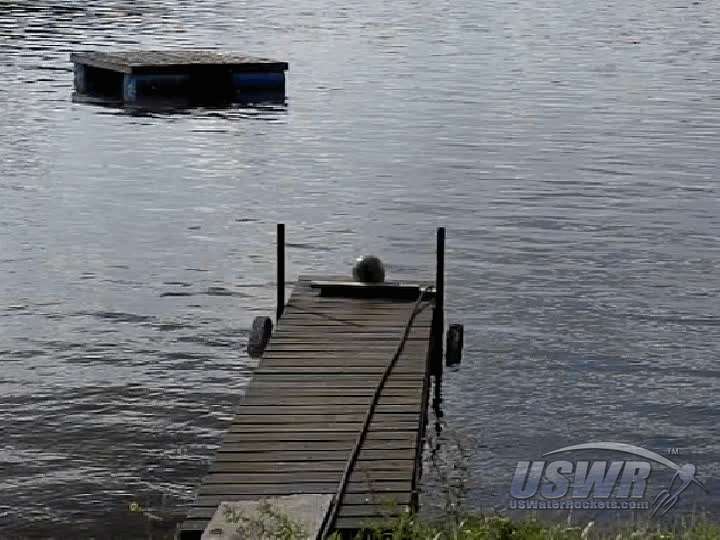Water Rocket Safety

Introduction:
The hobby of water rocketry can be very fun and exciting. The problem with water rocketry is that when most people think of a water rocket, they remember the little toy rockets from Park Plastics they played with when growing up. Thinking about water rockets as a small harmless children's toy can cause safety to become overlooked, and the next thing you know someone is on their way to the emergency room because the "water cooler" bottle that they were holding (so it would fly in a certain direction) exploded while their buddy was pressurizing it with a SCUBA tank. Of course, that is an extreme example, but even seemingly harmless soft drink bottles can cause serious injury if they are misused.People will think nothing and handle pressurized bottles, attaching metal to the pressurized bottle (which can become flying projectile should the bottle explode), launching their rockets without informing bystanders or fly large heavy rockets without thinking that what goes up must come down. Water rockets should be treated with the same respect that is given to high power pyro rockets. Children should only launch with adult supervision.
The safety issue for water rocketry is made even worse by the fact that water rockets can be built by anyone very cheaply using ordinary materials such as soda bottles, cardboard, paper, and pressurized with a bicycle pump. With pyro rockets you need to buy rocket motors, which makes them less accessible to the average person.
Below we present some safety guidelines for anyone wishing to build and fly water rockets. This list is by no means a comprehensive listing of all possible safety considerations. Keep in mind that what you are doing is considered dangerous and you must use your own common sense when working with any compressed gas powered system.
Constructing Your Rocket:
- Build your rocket using only lightweight, non-metallic parts for the structure, nose, body, and payload/parachute bay.
- Never use glass or other breakable containers at any time. Use only carbonated beverage bottles or pressure chambers that are designed to handle the envisioned flight pressures.
- Don't use metal inside or attached to the pressurized portions of the rocket unless they are constrained within a safety cage or otherwise restrained at all times. Metal parts attached to the pressurized portion of the rocket can become projectiles should the pressurized part explode.
- Rocket can be any shape or size but cannot exceed 1,500 grams. This is the total dry weight of all flying components in a flight ready condition including the pressure vessel, fins, nosecone, payload bay, camera, altimeter, flight computer, deployment system, batteries, and nozzle.(no reaction mass) A heavy mass falling from high altitude can be very harmful to persons or property.
- Reaction Mass must be primarily ordinary tap water or other inert materials. Do not use substances that are flammable or harmful to people or the environment.
- Rockets should be launched from a stable launch device that is pointed to an angle which will guarantee that the rocket flight path is well clear of any buildings, or other obstructions, and the rocket will not descend in an area near people or animals.
- Launcher should be constructed using components which are rated for the planned launch pressure.
- Rocket must be completely remotely launched. Operators/Spectators are to stand back a minimum of 15 meters (50 feet) while rocket is pressurized and remote launched. Persons may be closer than this if they are behind an adequate shield such as a large tree, but touching or handling of the rocket is forbidden. (Activating cameras and deployment systems must be done prior to pressurization, launch triggered, or done remotely). A rocket can rupture and explode violently and cause severe injury.
- Everyone should be kept at a safe distance from any pressurized rocket. The safe distance is 50 Feet (15 meters) flight crew members should maintain from a pressurized rocket. Add a minimum of 10 feet (3 meters) or more for spectators. Spectators should always stay behind flight crew members.
- Make sure that all valves, hoses, pipes and fittings from the pressure source to the launch pad shall be rated for the planned launch pressure.
- A means of remotely draining all of the pressure from the rocket and launcher must be incorporated into the launcher design, so that the system can be completely depressurized in the event of an aborted or failed launch.
- An audible countdown should be used before each launch to notify all persons in the area that the launch is about to take place.
- You should only launch your rocket in safe weather conditions.
- You should not launch your rocket on windy days.
- Do not launch your rockets into clouds or during foggy conditions where you or bystanders could lose sight of it.
- Do not attempt to recover your rocket from power lines, tall trees, rooftops or other dangerous places.
- Do not launch rockets at people or animals Watches mall , near or over roadways or into the path of a vehicle.
- Do not launch small animals as payload.
Additional safety rules must be followed if you plan on competing See the WRA2 Water Rocket Safety Rules.








